gigafactory
description: a term coined by Elon Musk to describe Tesla's large-scale battery manufacturing facilities.
38 results
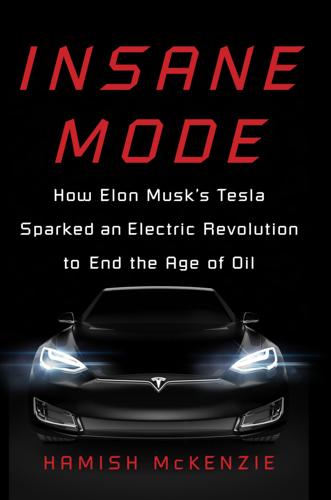
Insane Mode: How Elon Musk's Tesla Sparked an Electric Revolution to End the Age of Oil
by
Hamish McKenzie
Published 30 Sep 2017
Musk says Tesla will make its first Powerpacks and Powerwalls at its factory in Fremont, but will ramp up production when it moves into the Gigafactory. Then comes a surprise: Tesla is planning to build multiple gigafactories. “There’s going to need to be many other companies building sort of Gigafactory-class operations of their own, and we hope they do,” he says. Tesla will make its Gigafactory patents available to use free of charge, just as it does with its vehicles. The crowd applauds. He describes the Gigafactory as a “giant machine” and asks people to think of it as a product. It just happens to be a product that’s stuck in the ground.
…
In 2013, the Hyperloop was just one man’s science project, sketched out through rough calculations in a white paper that he had written in an all-nighter. In the same month, the Gigafactory was just an uttered thought, when Musk wondered aloud about the prospect of building a “gargantuan factory of mind-boggling size.” For now, at least the Gigafactory part of Musk’s new story is a reality. While Tesla decided to build the factory because it was essential to meet the production needs of the Model 3, it has since said that as much as half of its output will be dedicated to energy storage. It is thus the bedrock of two potentially giant businesses—or could be. Even in its advanced state of progress, the first Gigafactory project is so complex, enormous, and expensive that it embodies daring and danger in equal proportions.
…
Even with a $1.6 billion contribution from Panasonic, Tesla has had to raise billions for its construction through bond sales, share sales, and lines of credit. And there’s no guarantee the costs won’t inflate before the Gigafactory’s planned completion in 2020. Any setbacks that delay its completion wouldn’t be limited to the facility itself. If the Gigafactory falters, Tesla’s overall business will falter. It’s not just the Model 3 but also the energy storage business. It’s the future of the Tesla pickup, the heavy-duty Tesla Semi, the automated fleet. Musk’s full-stack vision is nothing without the Gigafactory at its base. But this time around, Tesla’s potential competitors are not waiting to see how the crazy bet works out.

Power Play: Tesla, Elon Musk, and the Bet of the Century
by
Tim Higgins
Published 2 Aug 2021
The $23 million purchase gave him stunning views of the San Francisco Bay and a place to hold parties and private dinners. Though investors showed new enthusiasm, inside Tesla there was cause for concern. Both the Fremont factory and Gigafactory were behind schedule. As Musk looked for reasons why, some were laying the blame—fairly or unfairly—on Panasonic. Almost from the beginning, the Tesla team had been pushing aggressive timelines. Accelerating production plans didn’t make things easier. Just as the Model S had been worked out as production began, the Gigafactory was still being designed as Tesla approached Model 3 production. Fearing what the delays could turn into, Dan Dees at Goldman Sachs, Musk’s longtime banker, urged him to raise money in case things didn’t work out smoothly.
…
At one point, a Tesla executive stood among crates and crates of cells ready to be assembled. He estimated there were 100 million cells just waiting to be put into battery packs. Hundreds of millions of dollars of inventory just sitting around, eating away cash. Gigafactory’s problems drove Musk into a rage. He began flying to the Gigafactory more often to personally address the matter. He’d always been quick to fire people, but it had historically been through managers, not in person. Now, it might be whomever he came across on the factory floor. There was no reasoning with him; he blamed everyone but himself—even when they tried to explain that robots were malfunctioning because of his demands.
…
Minutes later, as Musk headed to the airport to fly to the Gigafactory in Nevada, he typed out a fateful message on Twitter: “Am considering taking Tesla private at $420. Funding secured.” It was the kind of half-cocked, uncensored messaging that Musk was known for—precisely what made his Twitter account a must-read for tens of millions of people, fans and detractors alike. Musk wasn’t remotely prepared for the onslaught that these nine words would bring. The reaction on Wall Street was instantaneous. Shares, which had already been rising, soared. Musk arrived at the Gigafactory almost giddy, asking managers if they knew what 420 stood for?
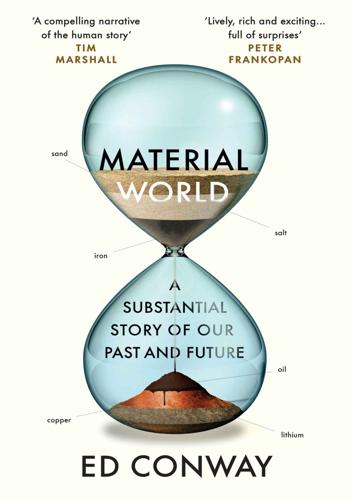
Material World: A Substantial Story of Our Past and Future
by
Ed Conway
Published 15 Jun 2023
There are a fair few other buildings that go by that name these days; at the time of writing Tesla had four others besides – one in Shanghai, one in Berlin, one in Texas and another in upstate New York, though while Tesla still calls that last one a gigafactory most others do not. The definition of a gigafactory is anyway rather vague, in large part because the term was essentially plucked out of the air a few years ago by the mercurial Tesla chief executive Elon Musk, and because his own precise definition seems to have shifted as time has gone by. These days, however, most people in the battery business seem to have converged on a broad definition: a gigafactory is any big manufacturing plant turning out a lot of batteries – and since that last Tesla ‘gigafactory’ makes solar panels, it doesn’t qualify. However, Gigafactory Nevada undoubtedly does.
…
There is no other single activity that has quite such a bearing on our carbon footprint, which is why today there is quite so much obsession with batteries, and why places like this building are quite so important. The Gigafactory Up until a few years ago, a battery company was considered a big deal if it was turning out 5 million cells a month. This factory produces that many in a couple of days. Within a few years of its construction it had made more than a billion cells and by the time you’re reading this it will probably have surpassed 10 billion – a battery for every man, woman and child on the planet, and all from this hidden valley in the wilds of Nevada. This is Tesla’s Gigafactory 1 (also known as Gigafactory Nevada); the world’s very first gigafactory. There are a fair few other buildings that go by that name these days; at the time of writing Tesla had four others besides – one in Shanghai, one in Berlin, one in Texas and another in upstate New York, though while Tesla still calls that last one a gigafactory most others do not.
…
As things stand, China controls about 80 per cent of the world’s battery production capacity. Indeed, according to Benchmark Mineral Intelligence, one of the chroniclers of this new era of gigafactories, even if all the European and American grand visions for battery production actually materialised, by the beginning of the 2030s China will still be turning out seven out of every ten batteries produced anywhere in the world.2 When I began writing this book, the Tesla/Panasonic gigafactory in Nevada was so much bigger than any other rival facility that most insiders expected things to remain that way for the foreseeable future. Then out of nowhere in 2022 news emerged of a factory in the obscure south-east Chinese city of Fuding that was able to turn out 60GWh of batteries a year and rising, making it a third bigger than the Nevada plant.
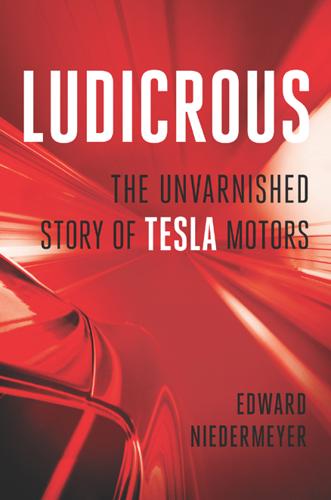
Ludicrous: The Unvarnished Story of Tesla Motors
by
Edward Niedermeyer
Published 14 Sep 2019
“Musk plunges Tesla into Nevada’s housing crisis.” Reno Gazette Journal, October 12, 2018. https://www.rgj.com/story/news/2018/10/12/elon-musk-tesla-gigafactory-nevada-housing-crisis/1619609002/ 184were already pointing the way to the trouble ahead: Jeff Cobb. “Model 3 ‘Bottleneck’ Blamed on Chaos and Incompetence at Tesla Gigafactory.” HybridCars.com, October 31, 2017. https://www.hybridcars.com/model-3-bottleneck-blamed-on-chaos-and-incompetence-at-tesla-gigafactory/ 186one of its trademark extravaganza events at the Fremont factory: Model 3 Owners Club. “Model 3 Delivery event live stream.” YouTube video, July 28, 2017. https://youtu.be/NO9q0Rq44uc 186he had recently broken up with the actress Amber Heard: Neil Strauss.
…
Reuters, November 29, 2017. https://www.reuters.com/article/us-tesla-quality-insight/build-fast-fix-later-speed-hurts-quality-at-tesla-some-workers-say-idUSKBN1DT0N3 189reports published at BusinessInsider, CNBC, and Bloomberg, alleging . . . problems at the sprawling Nevada plant: Linette Lopez. “Tesla employees describe what it’s like to work in the gigantic Gigafactory.” Business Insider, September 4, 2018. https://www.businessinsider.com/tesla-workers-describe-working-in-gigafactory-2018-8; Linette Lopez. “Insiders describe a world of chaos and waste at Panasonic’s massive battery-making operation for Tesla.” Business Insider, April 16, 2019. https://www.businessinsider.com/panasonic-battery-cell-operations-tesla-gigafactory-chaotic-2019-4; Lora Kolodny. “Tesla employees say to expect more Model 3 delays, citing inexperienced workers, manual assembly of batteries.”
…
Reuters, January 7, 2010. https://www.reuters.com/article/tesla-panasonic/tesla-panasonic-partner-on-electric-car-batteries-idUSN0721766720100107 77culminating in a 2014 commitment to build a massive joint plant: Tesla Motors Press Release. “Panasonic and Tesla Sign Agreement for the Gigafactory.” July 31, 2014. https://ir.teslamotors.com/news-releases/news-release-details/panasonic-and-tesla-sign-agreement-gigafactory 78Musk would repeatedly blame Eberhard. “In the Beginning.” Tesla Motors Blog (since deleted, accessed via web.archive.org). https://web.archive.org/web/20090624221445/http://www.teslamotors.com/blog2/?p=73; Claire Cain Miller, “Musk Unplugged: Tesla C.E.O.

The Future Is Faster Than You Think: How Converging Technologies Are Transforming Business, Industries, and Our Lives
by
Peter H. Diamandis
and
Steven Kotler
Published 28 Jan 2020
plummeting 90 percent between 1990 and 2010: Naam, author interview. eleven-fold increase in capacity: Ibid. Enter the Gigafactory: See Gigafactory 1’s website here: https://www.tesla.com/gigafactory. See also: Matthew Wald, “Nevada a Winner in Tesla’s Battery Contest,”New York Times, September 4, 2014, https://www.nytimes.com/2014/09/05/business/energy-environment/nevada-a-winner-in-teslas-battery-contest.html. A second Gigafactory has been built in Buffalo: See Gigafactory 2’s website here: https://www.tesla.com/gigafactory2. a third in Shanghai: Simon Alvarez, “China Formally Adds Tesla Gigafactory 3 Area to Shanghai’s Free-Trade Zone,” Teslarati, August 6, 2019.
…
a third in Shanghai: Simon Alvarez, “China Formally Adds Tesla Gigafactory 3 Area to Shanghai’s Free-Trade Zone,” Teslarati, August 6, 2019. See: https://www.teslarati.com/china-adds-tesla-gigafactory-3-shanghai-free-trade-zone/. European location: At the time that we are publishing this book, Tesla is still in the planning phase for Gigafactory 4. For more info, see this article: Simon Alvarez, “Tesla Closing In on Lower Saxony, Germany as Final Europe Gigafactory Location: Report,” Teslarati, August 22, 2019, https://www.teslarati.com/tesla-europe-gigafactory-4-location-lower-saxony-germany/. one hundred Gigafactories: Leonardo DiCaprio, Before the Flood (documentary), National Geographic, October 21, 2016. You can watch a relevant clip on Nat Geo’s YouTube channel here: https://youtu.be/iZm_NohNm6I.
…
But producing enough of them to meet demand has been an ongoing problem. Enter the Gigafactory—Tesla’s attempt to double global lithium-ion battery production. Located outside of Reno, the Gigafactory churns out twenty gigawatts of energy storage per year, marking the first time we’ve seen lithium-ion batteries produced at scale. A second Gigafactory has been built in Buffalo, a third in Shanghai, and a European location is under consideration. While it remains to be seen, Elon Musk has calculated that one hundred Gigafactories could manufacture enough storage for our planet’s needs. Tesla has also shown their batteries work at scale.
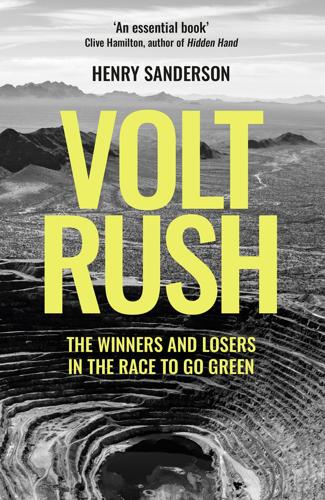
Volt Rush: The Winners and Losers in the Race to Go Green
by
Henry Sanderson
Published 12 Sep 2022
The Brussels-based NGO Resource Matters estimated that Gertler received an average of more than $200,000 a day in royalties throughout 2018 on sales of cobalt and copper. That cobalt was now making its way to some of the largest car companies in the world, as well as into our smartphones. Two years later Tesla’s Elon Musk opened the company’s new Gigafactory on the outskirts of Shanghai, which had been built in just ten months. Sitting in the audience were two young men from Glencore. Tesla’s Shanghai Gigafactory was a watershed for the car company, as it opened up the largest electric car market and also turned Tesla into a global company. Tesla deepened its relationships with key Chinese suppliers such as battery maker CATL and lithium producer Ganfeng.
…
At Tesla, Straubel designed its first batteries, led development of the Gigafactory in Nevada and served as chief technology officer for fifteen years. So, when the soft-spoken engineer left in 2019, he could have raised money to do anything in Silicon Valley. He decided to move permanently to Carson City, a town in the middle of Nevada. Once described by former resident Mark Twain as ‘a desert, walled in by barren, snow-clad mountains’, Carson City was home to fewer than 60,000 residents.2 Straubel had bought a 300-acre ranch there to be near Tesla’s Gigafactory. He still drove an original bright yellow Roadster, one of the early prototypes of Tesla’s first electric car.
…
There are over one billion cars globally on the roads. We will also need to replace buses and trucks with electric versions, as well as ships, ferries and even planes. All this will require batteries on a scale unimaginable a few years ago. Tesla’s South African-born founder Elon Musk had built a vast battery ‘Gigafactory’ in the desert of Nevada to supply his electric cars as well as the batteries to store renewable sources of energy. But he was not alone: across China a new factory was being built every week in 2020. Through my work as a Financial Times journalist, I had covered the raw materials electric cars needed: the lithium, cobalt, nickel and copper, as well as aluminium and steel.
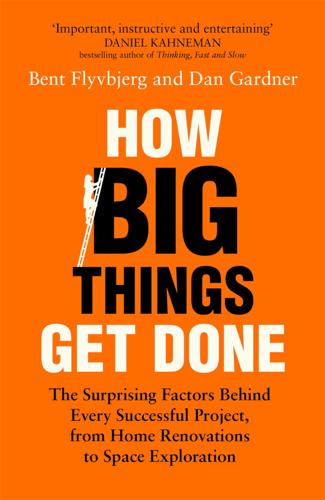
How Big Things Get Done: The Surprising Factors Behind Every Successful Project, From Home Renovations to Space Exploration
by
Bent Flyvbjerg
and
Dan Gardner
Published 16 Feb 2023
Leif Lia et al., “The Current Status of Hydropower Development and Dam Construction in Norway,” Hydropower & Dams 22, no. 3 (2015); “Country Profile Norway,” International Hydropower Association, https://www.hydropower.org/country-profiles/norway. 19. Tom Randall, “Tesla Flips the Switch on the Gigafactory,” Bloomberg, January 4, 2017, https://www.bloomberg.com/news/articles/2017-01-04/tesla-flips-the-switch-on-the-gigafactory; Sean Whaley, “Tesla Officials Show Off Progress at Gigafactory in Northern Nevada,” Las Vegas Review-Journal, March 20, 2016; Seth Weintraub, “Tesla Gigafactory Tour Roundup and Tidbits: ‘This Is the Coolest Factory in the World,’” Electrek, July 28, 2016, https://electrek.co/2016/07/28/tesla-gigafactory-tour-roundup-and-tidbits-this-is-the-coolest-factory-ever/. 20. Atif Ansar and Bent Flyvbjerg, “How to Solve Big Problems: Bespoke Versus Platform Strategies,” Oxford Review of Economic Policy 38, no. 2 (2022): 338–68. 21.
…
Weintraub, Seth. 2016. “Tesla Gigafactory Tour Roundup and Tidbits: ‘This Is the Coolest Factory in the World.’” Electrek, July 28. https://electrek.co/2016/07/28/tesla-gigafactory-tour-roundup-and-tidbits-this-is-the-coolest-factory-ever/. Weinzierl, Matthew C., Kylie Lucas, and Mehak Sarang. 2021. SpaceX, Economies of Scale, and a Revolution in Space Access. Boston: Harvard Business School. West, Geoffrey. 2017. Scale: The Universal Laws of Life and Death in Organisms, Cities, and Companies. London: Weidenfeld and Nicolson. Whaley, Sean. 2016. “Tesla Officials Show Off Progress at Gigafactory in Northern Nevada.”
…
One of the world’s leaders in hydroelectricity, Norway, a country of just 5 million inhabitants, has an active policy to enhance small hydro development and has commissioned more than 350 small-scale hydroelectric projects since 2003, with more to come.18 A giant factory, too, may seem to be one huge thing or nothing. But when Elon Musk announced that Tesla would build Gigafactory 1 (today known as Giga Nevada), the world’s largest factory by footprint, he envisioned it in modular terms. His Lego was a small factory. Build one, get it working. Build another beside it and integrate the two. Build a third, a fourth, and so on. By building Gigafactory 1 this way, Tesla started turning out batteries and earning revenue within a year of the announcement, even as work continued on the whole giant facility, which will consist of twenty-one “Lego blocks” when completed.19 The key elements of modularity appear to be central to Elon Musk’s general approach to engineering, and he uses them in remarkably different ventures.
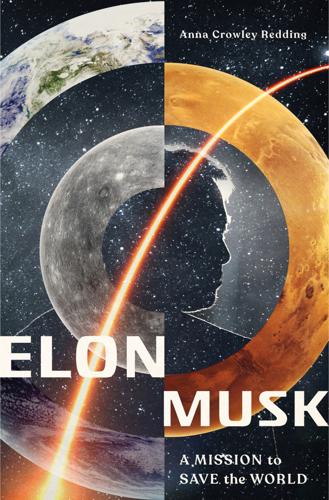
Elon Musk: A Mission to Save the World
by
Anna Crowley Redding
Published 1 Jul 2019
Elon loved paying back that loan. It proved his naysayers dead wrong. What Do You Do When You Are Out of Batteries? Tesla Gigafactory in Sparks, Nevada. (Photo by Tesla Motors Inc.) Tesla’s demand for lithium-ion batteries quickly outran the world’s supply. Not having the batteries on time delayed car production. In 2014, Elon found himself back in the desert, looking for the right spot to build a factory—where Tesla could make its own batteries. Meet the Gigafactory, located in, um … Sparks, Nevada, on Electric Avenue. The $5 billion factory is designed to be built in phases, but once complete, the total size will be 5.8 million square feet.
…
How big is that? Big enough to fit more than two hundred White Houses inside. In a TED Talk, Elon was asked how many Gigafactories it would take to get us to a future where we don’t need to feel guilty about energy use. That means enough lithium-ion batteries to run everything that’s currently powered by fossil fuels in the world. Without flinching, Elon said, “It’s about a hundred roughly. It’s not ten or a thousand. Most likely a hundred.”129 As of 2018, there are plans to build Gigafactories in China and Europe. CHAPTER 9 OF COURSE I STILL LOVE YOU In the summer of 2013, Elon dressed up in a medieval costume to get ready for his third wedding.
…
“Solar Has Overtaken Gas and Wind as Biggest Source of New U.S. Power.” Bloomberg, 12 June 2018. www.bloomberg.com/news/articles/2018-06-12/solar-surpasses-gas-and-wind-as-biggest-source-of-new-u-s-power. Matousek, Mark. “Elon Musk Reveals New Details About Tesla’s Plans to Build Gigafactories Around the World.” Business Insider, 6 June 2018. www.businessinsider.com/elon-musk-details-teslas-gigafactory-plans-in-us-china-europe-2018-6. McGivern, Mark. “St Trinians Star Talulah Riley Marries Internet Millionaire in Fairytale Highland Wedding.” Daily Record (Glasgow, Scotland), 28 Sept. 2010. www.dailyrecord.co.uk/entertainment/celebrity/st-trinians-star-talulah-riley-1071170.
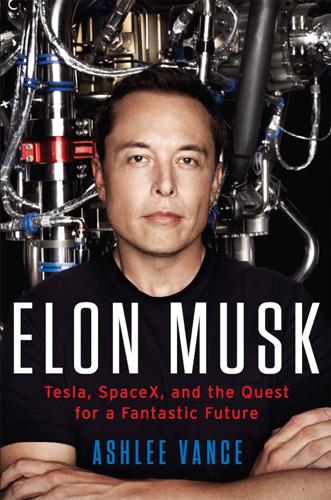
Elon Musk: Tesla, SpaceX, and the Quest for a Fantastic Future
by
Ashlee Vance
Published 18 May 2015
Tesla already consumes a huge portion of the world’s lithium ion battery supply and will need far more batteries to produce the Model 3. This is why, in 2014, Musk announced plans to build what he dubbed the Gigafactory, or the world’s largest lithium ion manufacturing facility. Each Gigafactory will employ about 6,500 people and help Tesla meet a variety of goals. It should first allow Tesla to keep up with the battery demand created by its cars and the storage units sold by SolarCity. Tesla also expects to be able to lower the costs of its batteries while improving their energy density. It will build the Gigafactory in conjunction with longtime battery partner Panasonic, but it will be Tesla that is running the factory and fine-tuning its operations.
…
That one might be even bigger since SpaceX has like ten buildings now. It would probably be really expensive, but I like the idea of it.” What’s fascinating is that Musk remains willing to lose it all. He doesn’t want to build just one Gigafactory but several. And he needs these facilities to be built quickly and flawlessly, so that they’re cranking out massive quantities of batteries right as the Model 3 arrives. If need be, Musk will build a second Gigafactory to compete with the Nevada site and place his own employees in competition with each other in a race to make the batteries first. “We’re not really trying to sort of yank anyone’s chain here,” Musk said.
…
It will build the Gigafactory in conjunction with longtime battery partner Panasonic, but it will be Tesla that is running the factory and fine-tuning its operations. According to Straubel, the battery packs coming out of the Gigafactory should be dramatically cheaper and better than the ones built today, allowing Tesla not only to hit the $35,000 price target for the Model 3 but also to pave the way for electric vehicles with 500-plus miles of range. If Tesla actually can deliver an affordable car with 500 miles of range, it will have built what many people in the auto industry insisted for years was impossible. To do that while also constructing a worldwide network of free charging stations, revamping the way cars are sold, and revolutionizing automotive technology would be an exceptional feat in the history of capitalism.

Elon Musk
by
Walter Isaacson
Published 11 Sep 2023
When Afshar, with all due respect to Tulsa, gave the answer Musk expected, he texted back, “Okay, great. We’ll do it in Austin and you should run it.” A similar process led to the choice of Berlin for a European Gigafactory. It and Austin would get built in less than two years and join Fremont and Shanghai as the pillars of Tesla’s car production. By July 2021, a year after construction began, the basic structure of the Austin Gigafactory was complete. Musk and Afshar stood in front of a wall in a temporary construction office and studied photos of the site at various stages. “We’re building twice as fast as Shanghai per square foot, despite the regulations we face,” Afshar said.
…
“I would tell him, Michael, you can’t tell people they have to get their shit together, and then when they don’t get their shit together nothing happens to them.” A difference in strategy also emerged. Marks decided that Tesla should partner with an experienced automaker to handle the assembly of the Roadster. That flew in the face of Musk’s fundamental instincts. He aspired to build Gigafactories where raw materials would go in one end and cars would come out the other. During their debates over Marks’s proposal to outsource assembly of the Tesla, Musk became increasingly angry, and he had no natural filter to restrain his responses. “That’s just the stupidest thing I’ve ever heard,” he said at a couple of meetings.
…
But it’s also as smoothly effortless as a Rolls-Royce, can carry almost as much stuff as a Chevy Equinox, and is more efficient than a Toyota Prius. Oh, and it’ll sashay up to the valet at a luxury hotel like a supermodel working a Paris catwalk.” The article ended by mentioning “the astonishing inflection point the Model S represents”: it was the first time that the award had gone to an electric vehicle. The Nevada battery Gigafactory The idea that Musk proposed in 2013 was audacious: build a gigantic battery factory in the U.S., with an output greater than all other battery factories in the world combined. “It was a completely wacky idea,” says JB Straubel, the battery wiz who was one of Tesla’s cofounders. “It seemed like science fiction crazy.”
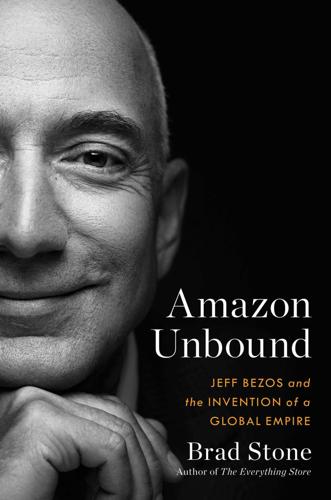
Amazon Unbound: Jeff Bezos and the Invention of a Global Empire
by
Brad Stone
Published 10 May 2021
History,” Washington Post, November 12, 2013, https://www.washingtonpost.com/blogs/govbeat/wp/2013/11/12/washington-just-awarded-the-largest-state-tax-subsidy-in-u-s-history/ (January 25, 2021). Nevada had offered Tesla: Jason Hidalgo, “Art of the Tesla Deal: How Nevada Won a Gigafactory,” Reno Gazette Journal, September 16, 2014, https://www.rgj.com/story/news/2014/09/13/art-tesla-deal-nv-won-gigafactory/15593371/ (January 25, 2021). $1 billion in annual tax incentives: Shayndi Raice and Dana Mattioli, “Amazon Sought $1 Billion in Incentives on Top of Lures for HQ2,” Wall Street Journal, January 16, 2020, https://www.wsj.com/articles/amazon-sought-1-billion-in-incentives-on-top-of-lures-for-hq2-11579179601 (January 25, 2021).
…
Amazon.cn executives from that time said that Bezos was totally uninterested in understanding the inner machinations of the Chinese government, cultivating ties with Chinese leaders, or using his budding fame to help Amazon’s cause in the country, as Elon Musk would do years later to set up a Tesla Gigafactory in Shanghai. Without a closer relationship with the Chinese Communist Party, Amazon ended up losing even more ground. In an analysis of the struggling China business they delivered to the S-team in 2014, the international team estimated the company had lost a billion dollars in the decade since the Joyo acquisition.
…
Amazon’s new air hub was going to create around two thousand new jobs. In contrast, electric automobile maker Tesla—run by Elon Musk, Bezos’s chief rival in the private space industry as well as for public adulation—had secured $1.3 billion in tax breaks a few years before for a battery plant in Nevada, dubbed the Gigafactory. Tesla was projecting it would create 6,500 jobs. It had earned about thirteen times more in tax incentives, per job, than Amazon. Bezos, of course, had spotted the difference. Three employees independently recalled his response to the news of the Kentucky deal and considered it a fateful harbinger of the belabored public process, nearly two years later, that would go by the infamous name HQ2.
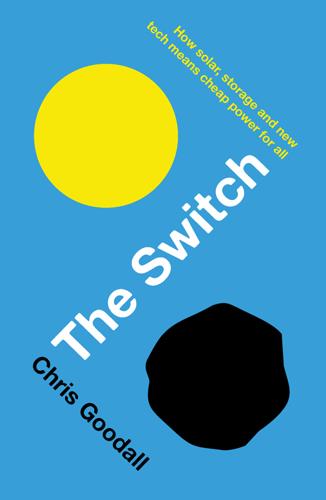
The Switch: How Solar, Storage and New Tech Means Cheap Power for All
by
Chris Goodall
Published 6 Jul 2016
Electric transportation has pushed batteries down the experience curve further and faster than laptops and mobile phones could have achieved on their own. The single most important figure in the battery industry today is Elon Musk, the head of Tesla. Working with battery manufacturer Panasonic, Tesla is building a vast ‘Gigafactory’ in Nevada that will produce battery packs for Tesla cars and also for the company’s new residential and grid storage systems. By building a factory of this size Tesla is expected to reduce the cost per watt of storage to about half the level of just a couple of years ago. This will accelerate electric car sales and the use of lithium ion batteries in static storage as well.
…
Other car manufacturers will be desperate to achieve similar levels and my bet is that the rapidly growing Chinese electric bus and car manufacturer BYD, a core holding of US investor Warren Buffett, will be producing millions of inexpensive and low-specification battery-driven autos by that date, further increasing the volumes of cells that are required and pushing the cost down to levels nobody has dreamt of, even now. How Tesla’s new Gigafactory in Nevada will look. It will deliver as many lithium ion cells in a year as the whole world produced in 2013. A standard 2020 car will probably travel about four miles on each kilowatt hour of stored electricity, meaning that a 200-mile range will need a battery pack holding 50 kilowatt hours.
…
The company promises sub-$100/kWh batteries by 2020, a target that even Tesla will struggle to beat. As importantly, it will be possible to set up factories that are very much smaller and less expensive. Chiang talks of manufacturing plants that cost as little as $11 million, a minuscule fraction of the billions Tesla will spend on its Gigafactory. For that an owner might get a factory that makes about 80 megawatt hours of storage a year. The market may not be electric vehicle manufacturers but rather businesses seeking to deliver static storage to the electricity grid for overnight use. Domestic electricity storage From the mainstream media, not yet interested in 24M’s remarkable claims, Tesla gets all the attention, partly because of the glamour of its fabulous cars.

The War Below: Lithium, Copper, and the Global Battle to Power Our Lives
by
Ernest Scheyder
Published 30 Jan 2024
It’s, I think, the single biggest cost growth item right now, percentage basis, although just for those who don’t totally know this, the actual content of lithium in a lithium-ion cell is maybe around 2 or 3 percent of the [battery] cell.”38 The average U.S. price for an EV jumped to $66,000 that summer, up 30 percent from the prior year, as lithium prices spiked amid rising demand and little supply.39 Tesla imposed one of the biggest price jumps.40 Despite the role such proposed U.S. projects would play in abrogating climate change and even lessening the cost of green energy products, each one faces strong, legitimate opposition from environmentalists, neighbors, Indigenous groups, or others, underscoring the dilemma facing the country as it tries to go green.41 In 2021, China had either built or was building 148 of the world’s 200 lithium-ion battery gigafactories. Europe had 21. North America had 11.42 By 2029, 101 of the additional 136 lithium-ion battery plants planned for development will be in China.43 Despite that, auto industry executives had grown increasingly concerned that at least 90 percent of the battery supply chain—including mines—needed to meet aggressive EV transformation targets for the global transportation sector didn’t exist yet.44 By 2023, China had cemented its EV supply chain prowess and it cost about 10,000 euros less to build an EV in China than in Europe.45 U.S. environmental regulators have put multiple proposed domestic mines under regulatory scrutiny, even as other parts of the government consider loans for new projects, a disconnect in strategy that frustrates miners and conservationists alike.
…
Not only was Rhyolite Ridge not a science experiment, it was also sitting atop an estimated 146 million tonnes of lithium—the second-largest known deposit in the country—and boron, a chemical that can be sold to make soaps and other consumer goods.6 That meant Rhyolite Ridge could produce two in-demand products at once, offering two ways to make money should prices for one product ebb in the future, as often happens in commodity businesses. Importantly, the deposit did not contain as much clay as originally thought, easing production worries. “My jaw dropped,” Calaway said. Rhyolite Ridge and its lithium were inside the United States and less than 100 miles from a planned Gigafactory from Tesla, which at the time was on its way to becoming the world’s most valuable automaker. In a rare situation for the world of mining, the project could make money almost as soon as it opened. “That changed the dynamics a lot.” Immediately, Calaway bought $4 million of the company and took command of its board of directors, repeating steps he had taken at Orocobre, which increasingly was proving to be a test run for this new Nevada venture.
…
The company expected its cost to produce lithium to be about $2,510 per tonne, far below the industry average at that time of $7,000 per tonne. (By the end of 2022, lithium prices had jumped to $62,500 per tonne.25) Construction would begin in 2021 and the mine would be running by 2023, the company said. Tesla’s massive Gigafactory was only a short drive away from Rhyolite Ridge, the company eagerly noted (though it did not have any supply agreements with the automaker). The study showed, ioneer’s Calaway summarized, that “our Nevada project is poised to be one of the biggest, low-cost players in the lithium industry.”26 There was enough lithium at Rhyolite Ridge, the company said, to make nearly 400,000 electric vehicles each year for at least thirty years.27 It was an upbeat outlook despite the early onslaught of the coronavirus pandemic, which was trapping many of the company’s investors and executives at their home base in Australia.
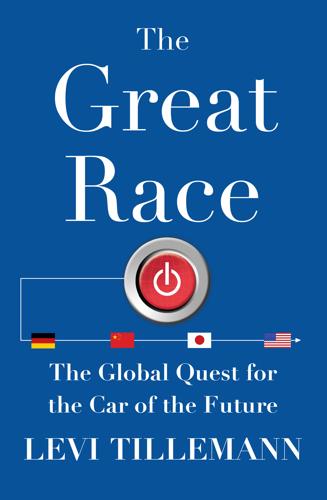
The Great Race: The Global Quest for the Car of the Future
by
Levi Tillemann
Published 20 Jan 2015
For an estimated $1.3 billion in tax incentives, it had purchased the 50 gigawatt facility. Governor Brian Sandoval proclaimed the investment would “change Nevada forever” and estimated that over its twenty year life span, the Gigafactory would bring $100 billion in economic benefits to the state. To put that number in context, Nevada’s 2013 GDP was less than $125 billion. The Gigafactory was a potential game changer—not just for Nevada, but for the world. So Tesla was the example of what Washington could do right. While Fisker, A123, and a number of other battery and EV investments crashed, Washington had helped Silicon Valley give birth to a new American car company—and one of the greatest cars the world had ever known.
…
By 2014 Tesla was trading in the $250 range with a market capitalization around $30 billion and it was exporting its flagship Model S to Europe, Japan, and China. Starting in early 2013, rumors began to circulate that Tesla would take the plunge and start manufacturing lithium-ion batteries in-house. In cooperation with its Japanese partner Panasonic, it planned to build a $5 billion “Gigafactory” that by 2020 would pump out enough battery packs for 500,000 long-range EVs every year. That volume represented more than the entire global production of lithium-ion batteries in 2013 and was projected to reduce battery costs by about 30 percent in time for the launch of Tesla’s low-cost third generation vehicle.
…
See also mass production foreign companies, and Chinese auto industry, 228, 233–35 Fortune magazine, 173 Foton, 206, 228 Fox News, 182 “Freedom Agenda,” 109–11 Freedom Car, 109–10, 117, 169 frequency balancing, 259 Fu Chengyu, 217–18 fuel cell vehicles Anegawa’s views about, 127 auto industry focus on, 124 Bush administration and, 111 California and, 92, 124, 255, 256–57 and cars in the future, 255–56 cost of, 127 criticisms of, 257 and “death” of EVs, 93 internal combustion engine compared with, 256 Japanese auto industry and, 117, 124, 126, 127, 255 Wan Gang and, 115, 207 fuel economy/efficiency CARB mandate and, 108, 172 and cars in the future, 255, 256 and competitors in Great Race, 6 and EPA-auto industry relations, 37 EPA mandate about, 256 funding for, 11 goals for, 172 Honda and, 118 and Japanese industrial policy, 103 lawsuits about regulation of, 142 and life span of autos, 264 and lobbying by U.S. auto industry, 161 of Mitsubishi cars, 130, 131 Obama administration and, 172, 183 societal impact of, 255 Toyota and, 118, 130 for trucks, 142 U.S. government loans for, 161 Fukushima Daiichi nuclear plant (Japan), 120, 185–93, 194, 195, 247, 248 gasoline Bush administration and, 111 and California’s prelude to the Great Race, 33, 37 and CARB LEV rule, 86 and cars in the future, 257–58 electrical dependence of, 258 and history of the global auto industry, 22 and Honda’s emission research, 61, 62–64 in Japan, 134 and methanol-powered cars, 72–73 and oil crisis of 2008, 163 price of, 134, 258 “reformulated,” 73 and U.S. auto industry, 153 See also shale gas production Geely auto company, 250 General Motors (GM) batteries and, 262 Biden’s comment about, 183 BYD and, 231 CARB and, 30, 39, 40, 72, 73, 74, 78, 79–80, 81, 89, 94, 108–9, 128, 142, 244 and characteristics of future cars, 255 China and, 216, 228, 234–35, 273 Chinese as employees at, 223, 227 emission standards at, 39 financial crisis/bankruptcy at, 166, 168, 169, 180 financing of operations at, 159 future of cars at, 274 and government help for auto industry, 160, 161–62, 166, 168–69, 171–72 and history of the global auto industry, 22 Honda and, 63, 68, 86 Hughes Aircraft acquisition by, 68, 69 and importing of foreign technology, 215 and internal combustion engine, 245 Japan and, 43, 44, 45, 249n “knock-down kits” of, 43 lawsuit against CARB by, 108–9 as losing technology race, 149 mass production at, 22 media and, 163, 165 Nissan and, 47 publicity about, 239 “reinvention” of, 78 reputation/image of, 68, 152 SAIC as partner of, 17, 20, 21, 251, 255, 273 “Sloanism” at, 22 Toyota and, 46, 151–52, 162 and U.S. economy in 2008, 158, 159 and U.S. occupation of Japan, 52 vision of future cars at, 17 Wilson’s saying about, 39 World Expo (Shanghai) and, 17, 20, 21, 251, 255 See also General Motors (GM)—cars of General Motors (GM)—cars of EV1, 79, 80, 84, 89–90, 91, 94, 109, 152, 163, 164, 227 EVs, 71, 72, 78, 79–80, 84, 85, 89–90, 91, 94, 152, 162–65, 180, 238–39, 245 hybrids, 124 Impact, 30, 71, 72, 73, 74, 76, 78, 79–80, 84, 90, 94, 152 Saab, 228, 250 solar-powered, 68–71 Sunraycer, 70–71, 73, 83, 84, 109, 146, 180, 265–66 Volt (Chevrolet), 20, 150, 161–63, 164–65, 166, 180, 215, 234–35, 239, 244, 245, 260, 261 Germany, 2, 7, 16, 23, 55, 95, 96, 99–101. See also Audi Ghosn, Carlos, 135–36, 139, 194 Gibson, Mel, 91 Gigafactory, Tesla’s, 243 Gingrich, Newt, 239 global economy auto industry impact on, 2, 6, 212 California’s influence on, 246 and characteristics needed to win the Great Race, 27 impact of EVs and driverless vehicles on, 21 impact of Great Race on, 3 and importance of auto industry, 2 nuclear power and, 248 in 2008, 157, 158, 165, 166 and winning the Great Race, 254 global warming.
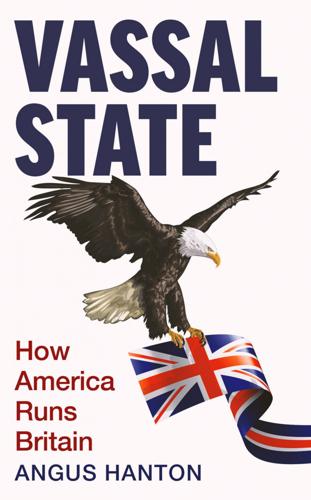
Vassal State
by
Angus Hanton
Published 25 Mar 2024
38055-1/presidential-economic-address. 23 ‘Global advisory board’, Pimco [website], https://www.pimco.co.uk/en-gb/global-advisory-board; ‘Alistair Darling elected to Morgan Stanley board of directors’, Morgan Stanley [website] (8 December 2015), https://www.morganstanley.com/press-releases/alistair-darling-elected-to-morgan-stanley-board-of-directors. 24 ‘George Osborne’, 9Yards Capital [website], https://theorg.com/org/9yards-capital/org-chart/george-osborne. 25 Mark Sweney, ‘Former chancellor Sajid Javid takes new role at JP Morgan’, Guardian (18 August 2020), https://www.theguardian.com/business/2020/aug/18/former-chancellor-sajid-javid-role-jp-morgan-adviser-us-bank-mp-conservative. 26 ‘Kwasi Kwarteng’, Wikipedia [website], https://en.wikipedia.org/wiki/Kwasi_Kwarteng. 27 Annabelle Dickson, ‘Boris Johnson’s parting shot: “Stay close to the Americans”’, Politico [website] (20 July 2022), https://www.politico.eu/article/stay-close-americans-boris-johnson-parting-shot/. 28 ‘Chancellor Rishi Sunak held US green card until last year’, BBC News [website] (8 April 2022), https://www.bbc.co.uk/news/uk-politics-61044847. 29 Peter Walker et al., ‘Akshata Murty may have avoided up to £20m in tax with non-dom status’, Guardian (7 April 2022), https://www.theguardian.com/politics/2022/apr/07/rishi-sunaks-wife-says-its-not-relevant-to-say-where-she-pays-tax-overseas. 30 Rupert Neate, ‘Rishi Sunak and Akshata Murty join UK rich list with combined £730m fortune’, Guardian (20 May 2022), https://www.theguardian.com/business/2022/may/20/sri-and-gopi-hinduja-named-uk-richest-people-james-dyson. 31 Kiran Stacey, ‘Labour accuses Rishi Sunak of angling for job after Elon Musk interview’, Guardian (3 November 2023), https://www.theguardian.com/politics/2023/nov/03/labour-accuses-rishi-sunak-of-angling-for-job-after-elon-musk-interview. 32 Tomas Malloy, ‘Tata Somerset gigafactory: UK government’s huge “£500m” battery plant subsidy explained’, SomersetLive [website] (22 July 2023), https://www.somersetlive.co.uk/news/somerset-news/tata-somerset-gigafactory-uk-governments-8616044. 33 House of Commons International Trade Committee, ‘Inward foreign direct investment: third report of session 2021–22’ [PDF], Parliament.uk [website] (21 September 2021), https://publications.parliament.uk/pa/cm5802/cmselect/cmintrade/124/report.html. 34 House of Commons International Trade Committee, ‘UK investment policy: seventh report of session 2017–19’ [PDF], Parliament.uk [website] (24 July 2019), https://publications.parliament.uk/pa/cm201719/cmselect/cmintrade/998/998.pdf, quoted ibid. 35 David Ricketts, ‘City stalwart Lord Grimstone lands Bain advisor role’, Financial News [website] (28 September 2023), https://www.fnlondon.com/articles/city-stalwart-lord-grimstone-lands-bain-advisor-role-20230928. 36 Joanna Partridge, ‘Behold London’s “landscraper”!
…
Chancellor Jeremy Hunt really wanted this genuine FDI, but had to offer incentives to JLR for them to build in the UK and apparently offered £500 million of government support – in hard cash, reduced energy costs, upgrading of the power network and the financing of new transport connections for the site in Bridgwater, Somerset.32 This was an enormous inducement – but at least it brings the gigafactory to Somerset rather than Spain and secures 9,000 jobs. In other cases, the government has offered a subsidy just to keep plants open. Such subsidies have an addictive quality and they build expectations: most automotive factory investments in the UK get 10–20 per cent of their costs paid in subsidies.
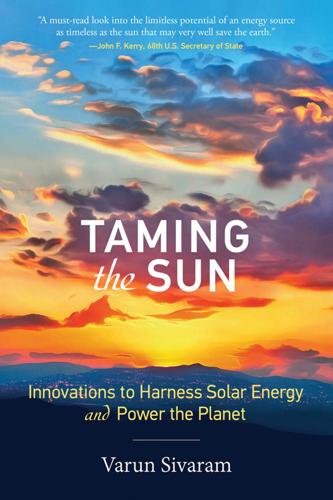
Taming the Sun: Innovations to Harness Solar Energy and Power the Planet
by
Varun Sivaram
Published 2 Mar 2018
Musk believes that he can re-create the dramatic cost declines achieved in solar by similarly scaling up the production of lithium-ion batteries. So out in the Nevada desert, Tesla has built its first Gigafactory, which aims to produce more lithium-ion batteries in 2018 than the entire world had produced just five years earlier. Word of the facility’s size has sparked a lithium-ion arms race, as rivals from China (BYD) and South Korea (LG Chem and Samsung) have ratcheted up battery production in anticipation of the Gigafactory. All this activity assured that Musk’s prediction of falling battery costs would be a self-fulfilling prophecy. Indeed, in 2016, the cost of a battery pack plunged, going from more than $400 per kilowatt-hour (kWh) of storage capacity to less than $200/kWh (figure 9.1).6 Figure 9.1 Comparison of lithium-ion battery and solar PV panel costs.
…
Thomas Heath, “Tesla’s ‘Crazy’ Climb to America's Most Valuable Car Company,” The Washington Post, April 10, 2017, https://www.washingtonpost.com/business/economy/teslas-crazy-climb-to-americas-most-valuable-car-company/2017/04/10/de05b9ae-1dfd-11e7-be2a-3a1fb24d4671_story.html. 6. Peter Fairley, “2017 Is the Make-or-Break Year for Tesla’s Gigafactory,” IEEE Spectrum: Technology, Engineering, and Science News, December 30, 2016, http://spectrum.ieee.org/transportation/advanced-cars/2017-is-the-makeorbreak-year-for-teslas-gigafactory. 7. Jesse D. Jenkins and Samuel Thernstrom, “Deep Decarbonization of the Electric Power Sector: Insights from Recent Literature,” Energy Innovation Reform Project (EIRP), March 2017, http://innovationreform.org/wp-content/uploads/2017/03/EIRP-Deep-Decarb-Lit-Review-Jenkins-Thernstrom-March-2017.pdf. 8.

Augmented: Life in the Smart Lane
by
Brett King
Published 5 May 2016
David Crane, 5th Annual ARPA-E Energy Summit, February 2014 Keep in mind that these comments are not coming from a solar energy company, but from inside one of the current market leaders in provision of retail electricity across the United States! If, however, we take homes, offices and factories off the grid, then storage of electricity becomes a critical element in the success of a distributed system. Recently, Tesla Motors, an automotive and energy storage company, announced that its new US$5-billion Gigafactory in Nevada will not only produce batteries for Tesla vehicles but will also sell batteries—called Powerwalls—for homes. These batteries are designed to capture excess solar capacity throughout the day so that homes can continue to operate independent of the grid in the dark and in cloudy weather when solar capture is reduced.
…
Based on a ±2 per cent confidence interval, this basically is a statistical certainty. 9 “AI, Robotics, and the Future of Jobs,” Pew Research Center, 6 August 2014. 10 http://cleantechnica.com/2014/04/24/us-energy-capacity-grew-an-astounding-418-from-2010-2014/ 11 http://www.americanprogress.org/issues/green/report/2014/05/29/90551/rooftop-solar-adoption-in-emerging-residential-markets/ 12 A prosumer is both a producer and consumer. 13 Google Green 14 See GreenTechMedia.com analysis, http://www.greentechmedia.com/articles/read/Utility-Scale-Solar-Reaches-Cost-Parity-With-Natural-Gas-Throughout-America. 15 Alissa Walker, “Tesla’s Gigafactory isn’t Big Enough to Make Its Preordered Batteries,” Gizmodo, 8 May 2015. 16 NBAD, University of Cambridge and PwC, “Financing the Future of Energy,” PV Magazine, 2 March 2015. 17 “Enter the entrepreneurs,” Mintel, 19 November 2014. 18 Cornerstone OnDemand Survey, November 2014. 19 “Generation Y and the Gigging Economy,” Elance, January 2014. 20 Check out https://workfrom.co/. 21 For more on work patterns throughout history, go to https://eh.net/encyclopedia/hours-of-work-in-u-s-history/. 22 “Solving the Mystery of Gen Y Job Hoppers,” Business News Daily, 22 August 2014. 23 Pew Research 2014 24 For more on Jordan Greenhall, go to http://reinventors.net/content/jordan-greenhall/. 25 Statistics taken from http://blog.autismspeaks.org/2010/10/22/got-questions-answers-to-your-questions-from-the-autism-speaks%E2%80%99-science-staff-2/. 26 See www.slate.com/articles/news_and_politics/explainer/2013/01/average_age_of_members_of_u_s_congress_are_our_senators_and_representatives.html. 27 “The 113th congress is historically good at not passing bills,” Washington Post, 9 July 2014.
…
A number of technical solutions are being worked on to solve this issue, including electrochemical storage (using electric power to generate and store NH3, or ammonia, which can later be burned as fuel, with no CO2 emissions), battery storage, etc. Tesla is heavily investing in this effort in the United States with its Gigafactory in Nevada, but it is also tracking multiple battery developments globally. “Right now, we track about 60 different efforts around the world to develop improved batteries and some of them hold some long-term promise. We rate all of them from one to five, where five is we should be doing business with them and one is complete BS.”
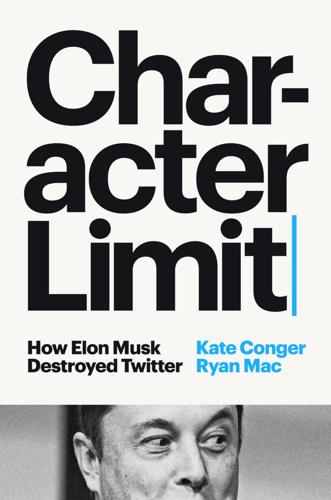
Character Limit: How Elon Musk Destroyed Twitter
by
Kate Conger
and
Ryan Mac
Published 17 Sep 2024
He highlighted his engineering experience and said he has spent long hours in the codebase as chief technology officer. He also told Musk not to worry about leaks to the press that suggested employees were unhappy about the prospect of Musk joining the board—the “silent majority” supported him, Agrawal promised. Musk was welcomed back to the Gigafactory that night by a drone light show, in which flying robots with LEDs formed the company logo and various Tesla vehicles in the evening sky near the 10-million-square-foot building. Inside, thousands of adoring fans waited for the arrival of their “technoking,” who drove onstage in a black Tesla Roadster through the Blade Runner–styled party.
…
A former ski instructor and medical device company engineer, he worked his way through the ranks of Tesla and had ingratiated himself with Musk by never saying no. At the automaker, he became known among employees for his ability to manage Musk’s expectations or translate bad news to the boss, and was given the responsibility of overseeing big projects like the build-out of the Gigafactory. “We all love you and are always behind you!” Afshar texted. “Not having a global platform that is truly free speech is dangerous for all.” Steve Davis, head of the Boring Company, also chimed in. Like Afshar, he idolized the entrepreneur, though people who knew him said he took it even a tad further.
…
After years of backing his leadership, they thought he had bad-mouthed them and gone behind their backs. With that, the board voted unanimously to approve the terms of the sale and agreed they would recommend the same to shareholders, who had to vote to approve the deal. As Twitter’s board voted, Musk was in Austin at the Tesla Gigafactory with Luhut Binsar Pandjaitan, an Indonesian minister who oversaw the country’s investments. They were supposed to discuss mining, as Indonesia sat on reserves of minerals that were crucial for electric car batteries. But the billionaire was distracted by the commotion of the deal. “I think this is the craziest thing I’ve ever done,” Musk said to Pandjaitan.
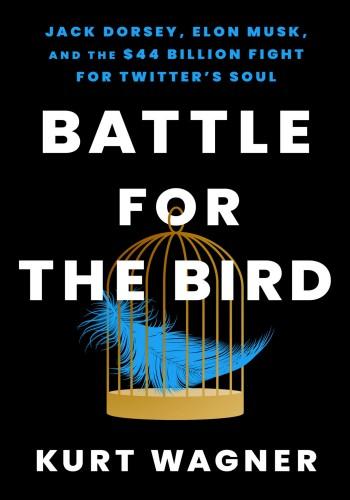
Battle for the Bird: Jack Dorsey, Elon Musk, and the $44 Billion Fight for Twitter's Soul
by
Kurt Wagner
Published 20 Feb 2024
“Software engineering, server operations & design will rule the roost”: Elon Musk (@elonmusk), “Software engineering, server operations & design will rule the roost.” Twitter, October 6, 2022, 5:42 p.m., https://twitter.com/elonmusk/status/1578184037776216064. where Tesla had a factory in Shanghai: Dana Hull and Chunying Zhang, “Elon Musk Set Up His Shanghai Gigafactory in Record Time,” Bloomberg, October 23, 2019, https://www.bloomberg.com/news/articles/2019-10-23/elon-musk-opened-tesla-s-shanghai-gigafactory-in-just-168-days. Gadde was fired immediately… was also fired and escorted out: Kurt Wagner and Ed Hammond, “Twitter CEO Among Top Executives Departing as Musk Takes Over,” Bloomberg, October 27, 2022, https://www.bloomberg.com/news/articles/2022-10-28/twitter-ceo-among-top-executives-departing-as-musk-takes-over?
…
NINETEEN VOX POPULI, VOX DEI Even for a billionaire, Elon Musk spent a lot of time on his private jet. He was constantly flying on his Gulfstream to meetings and rocket launches and other “rich guy stuff,” like visiting the pope or attending the Super Bowl. It wasn’t uncommon for Musk to make multiple trips between SpaceX’s headquarters near Los Angeles, and Tesla’s Gigafactory in Texas in the same week. Musk was routinely in the Bay Area, too, since Tesla had a major manufacturing facility in Fremont, just south of Oakland. In 2020, a Florida teenager even set up an account, @Elonjet, solely for the purpose of tracking Musk’s plane. After the takeover, many Twitter employees started following the account so they’d know whether the new boss was in the office.

Road to Nowhere: What Silicon Valley Gets Wrong About the Future of Transportation
by
Paris Marx
Published 4 Jul 2022
Even though Tesla pitches itself as an automaker that is setting out to save the world by replacing every vehicle on the road with an electric one—already a dubious environmental proposition—its recent actions provide reason to question those environmental commitments. As it shifts production to China with its planned Shanghai Gigafactory, the company’s emissions have been rising. But that increase is not simply because it is expanding and producing more vehicles; the production emissions of each individual vehicle are also rising, which means they will need to last even longer to ensure their lifecycle emissions—the total amount they emit from manufacture to when they are retired—are lower than a conventional vehicle.21 Tesla’s Nevada factory was supposed to derive power from solar panels covering its roof, but the company never finished building the solar array.
…
See bicycles Seattle, WA, ride-hailing services in, 99 Securities and Exchange Commission (SEC), 138 Sedran, Thomas, 129–30 self-checkout, 194–5 self-driving cars accidents with, 132–5 Autonomous Land Vehicle project, 119 Brin on, 114–5 challenges of, 126, 129–30 environmental dilemmas and, 131–2 Google, 6 Intermodal Surface Transportation Efficiency Act (1991), 119 Kalanick on, 116 Navlab autonomous vehicles, 119–20 Ng on, 126 pedestrians and, 127 pricing of, 127–8 pulp science fiction and, 118 Radio Corporation of America (RCA) and, 118 software for, 122–3 speed and, 123–4 Tesla’s Autopilot system, 137–8 Tsukuba Mechanical, 119 VaMoRs, 119 Sepulveda Pass, 141 Shanghai Gigafactory (Tesla), 83 Sheffield, UK, docked bikeshare system in, 170–1 Sheller, Mimi, 158, 207 Shell Oil City of Tomorrow, 2 Shill, Gregory, 30 shipping industry, 49 shut-in economy, 196–7 Sidewalk Labs, 228–30 Silicon Valley, 37–8, 44–5 skates (platforms), 146–7 Skyports, 154–5 Small Business Investment Company, 55 smart homes, 60–1 smartphone apps, 55, 181, 194–5 Smiley, Lauren, 196 Social Bicycles (SoBi), 167–8 Socialist Left Party, 209 social media, 61–2 SolarCity, 55, 143, 188 solar panels, Musk on, 188–9 Southern State Parkway, 26 Soviet Union, 39 space program, 48 SpaceX, 55, 144, 148, 150–1 speed limiter referendum, 19–20 speed limits, 18–20 Sputnik I satellite, 39, 45 standardized containers, increasing use of, 49 Standard Oil of California, 21 Stanford Industrial Park, 40 Stanford Research Institute, 54–5 Stanford University, 39–40, 55, 120 Stark, Tony, 70 Starley, John Kemp, 160, 162 Starship Technologies, 172, 173–5, 176–7 Stop de Kindermoord, 205 streetcars, 12–3, 15, 21, 92, 160 “subscriber city,” 197 suburbanization, 23 suburbs, 12–3 superhighway plan (Detroit), 22 supply chains, 50 Surface Transportation Policy Project, 141 surge pricing, for ride-hailing services, 100 Swisher, Kara, 116–7 Taft-Hartley (1947), 112 taxi medallions, 104–5 taxi services about, 95–6, 101–2, 104–5 industry regulation and, 107, 110–1, 185 Taylor, Isaac, 122 TCP/IP protocol, 50 TechGirls Canada, 228–9 tech industry development of, 9–10 growth of, 4, 180–5 speed of technological innovation, 48 technological solutionism, 59 Tesla, 5–6, 55, 63–4, 70, 72, 73, 82–4, 85–6, 116, 137–8, 143, 147, 158–9, 188, 189, 190 Tesla, Nikola, 70 Texas, Interstate Highway System in, 140 Thacker Pass, NV, 79, 226 Thiel, Peter, 46–7 Thrun, Sebastian, 121 Toronto, Canada, 228–30 Toyota, 116, 121, 122 train system in France, 220 in North America, 218–9 transportation bus system, 21, 215, 219 computerized planning systems for, 130 flying cars, 151–2, 159 history of, 7 jitneys, 89–91, 92, 108–9 Navlab autonomous vehicles, 119–20 present-day dominance of, 34–5 taxi services, 95–6, 101–2, 104–5, 107, 110–1, 185 three-dimensional vs. two-dimensional, 145 train system, 218–9, 220 tunnels for, 144–51, 154–5, 158–9, 189 vertical takeoff and landing vehicle (VTOL/eVTOL), 152–5, 157, 158 walking as primary means of, 12 Trudeau, Justin, 79–80, 228 Trump, Donald, 78 Tsukuba Mechanical, 119 tunnels, for transportation, 144–51, 154–5, 158–9, 189 Turner, Fred, 41, 43, 52 Turner, Matthew, 141–2 Uber about, 115 acquisition of Jump, 166–8 Advanced Technologies Group (ATG), 133, 134–5 benefits of, 94 campaigns for, 103 changed from Ford Fusion to Volvo XC90 SUVs, 134–5 compared with taxi services, 95–6 core business of, 93 costs for, 107–8 Covid-19 and, 108 customer base for, 100–1 divisions of, 153–4, 184 driver pay for, 103–4, 107 effect on traffic of, 100 employee classification for, 111–2 founding of, 181 Greyball and, 110 growth of, 97, 105–6 industry regulation and, 101–2, 107, 110–1, 112–3, 156, 174, 185 loss of money by, 106–7, 184–5 marketing by, 158–9 media representation of, 94–5 micromobility services of, 166–9 model of, 102–3 in New York City, 98–9 origins of, 92–3, 109 pricing for, 184 promises made by, 186 pulls out of China, 152 refocus on ride-hailing and food delivery services, 184–5 safety record of, 134, 135–6 in San Francisco, 97–8 walking vs., 191 Uber Air, 153–4, 155, 157, 159 Uber Copter, 155–6 Uber Eats, 184–5 Uber Elevate, 152, 154, 159 unemployment rate, 95–6 unions, for taxi drivers, 101–2 United Kingdom (UK) docked bikeshare system in, 170–1 ecommerce in, 193 University of Technology Sydney, 75 University Paris-East, 169–70 Unsafe at Any Speed (Nader), 27–8 Untokening collective, 218 Urban Challenge, 120 urban renewal strategy, 26 Urry, John, 32–3, 143 US Air Force, 50 US Department of Defense, 50 US-Japan Semiconductor Trade Agreement (1986), 45 US National Labor Relations Act, 102 VaMoRs, 119 Vansintjan, Aaron, 222 Vasquez, Rafaela, 132, 135 Vélib’ bikeshare system, 210 venture capitalists, 186–7, 199 vertical takeoff and landing vehicle (VTOL/eVTOL), 152–5, 157, 158 Very Far Away from Anywhere Else (Le Guin), 202 Vietnam War, 39, 40, 43, 49 VoiceOver, 175 Volkswagen, 77, 78, 129–30 Volocopter, 152 Volvo XC90 SUVs, 134–5 Walker, Jarrett, 59, 142–3, 181–2 walking, as means of transportation, 12, 191 Washington, DC, ride-hailing services in, 99 Waterfront Toronto, 228–9, 230, 231 Waymo, 133, 138, 186 web 2.0, 57 WeWork, 181, 182–3 white people, mortgages and, 29 Who Killed the Electric Car?

Driverless Cars: On a Road to Nowhere
by
Christian Wolmar
Published 18 Jan 2018
While sales of electric vehicles are clearly set to grow, there are major logistical and practical problems to overcome before they can become the car of choice for most people. 35 Driverless Cars: On a Road to Nowhere The key issue is whether enough batteries can be produced. Tesla is constructing what will become the biggest building in the world (in terms of its footprint) in Nevada to manufacture lithium-ion batteries, and it is eventually expected to produce enough batteries for 1.5 million cars per year. Elon Musk is planning several more such ‘gigafactories’ but there is clearly, at the moment, huge undercapacity of battery manufacturing in relation to the demand that would be created if even 10 or 20 per cent of cars, let alone a majority, were electric powered. While this is not an insuperable problem, there are also questions about the availability of sufficient lithium to produce these batteries.
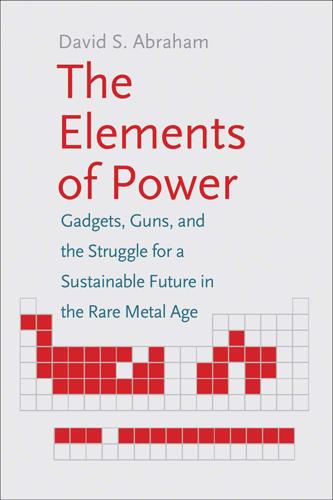
The Elements of Power: Gadgets, Guns, and the Struggle for a Sustainable Future in the Rare Metal Age
by
David S. Abraham
Published 27 Oct 2015
Jon Sonneborn, telephone interview by David Abraham, April 4, 2014. 32. Merrill Lynch analyst John Lovallo states that the company believes a range of $100–$150/kWh is needed to create a competitive advantage over internal combustion end vehicles. Chris Ciaccia, “Tesla Unveils Gigafactory: What Wall Street’s Saying,” Thestreet, February 27, 2014, http://www.thestreet.com/story/12459694/1/tesla-unveils-gigafactory-what-wall-streets-saying.html; Sebastian Anthony, “Tesla’s Model S Now Has a Titanium Underbody Shield to Reduce Risk of Battery Fires to ‘Virtually Zero,’ ” Extremetech, March 28, 2014, http://www.extremetech.com/extreme/179422-teslas-model-s-now-has-a-titanium-underbody-shield-to-reduce-risk-of-battery-fires-to-virtually-zero. 33.

Falter: Has the Human Game Begun to Play Itself Out?
by
Bill McKibben
Published 15 Apr 2019
“The board doesn’t touch the water. It’s like an airplane wing.”1 Anyway, these tech masters would laugh, and not politely, at the thought of trying to resurrect an eighteenth-century technology like coal. They’re all about the future: Tesla is installing the world’s largest rooftop solar array on the top of its Gigafactory, which produces more lithium-ion batteries than any facility on Earth. Google spelled out its corporate logo in mirrors at the giant solar station in the Mojave Desert on the day it announced that it would power every last watt of its global business with renewable energy; it’s the world’s biggest corporate purchaser of green power.2 But there is exactly one human being who bridges that cultural gulf between these different species of plutocrat.
…
“At that pace, it would take four hundred and five years, which is kind of too long.”9 So, Solomon did the math to figure out how many factories it would take to produce 6,448 gigawatts of clean energy in the next thirty-five years. He started by looking at Tesla’s big new solar panel factory in Buffalo. “They’re calling it the gigafactory,” Solomon says, “because the panels it builds will produce one gigawatt worth of solar power every year.” Using that plant as a rough yardstick, Solomon calculates that America needs 295 solar factories of a similar size to defeat climate change (roughly six per state), plus a similar effort for wind turbines.
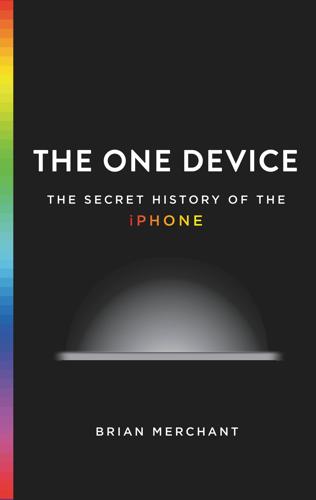
The One Device: The Secret History of the iPhone
by
Brian Merchant
Published 19 Jun 2017
As of 2015, they made up a thirty-billion-dollar annual market. And the trend is expected to continue, abetted by electric and hybrid vehicles. That massive, rapid-fire doubling of the market that occurred between 2015 and 2016 was primarily due to one major announcement: the opening of Tesla’s Gigafactory, which is slated to become the world’s largest lithium-ion-battery factory. According to Transparency Market Research, the global lithium-ion-battery market is expected to more than double to $77 billion by 2024. It’s time to hit the pool. Pools, I mean. Of lithium. My chat with Goodenough went longer than expected, and the crew is waiting to take us to the lithium ponds that form the core of the mining operation.
…
Plants harvest sunlight but are needed for food. Photovoltaic cells and windmills can provide electricity without polluting the air, but this electric power must be stored, and batteries are the most convenient storage depot for electric power.” Which is exactly why entrepreneurs like Elon Musk are investing heavily in them. His Gigafactory, which will soon churn out lithium-ion batteries at a scale never before seen, is the clearest signal yet that the automotive and electronics industry have chosen their horse for the twenty-first century. The lithium-ion battery—conceived in an Exxon lab, built into a game-changer by an industry lifer, turned into a mainstream commercial product by a Japanese camera maker, and manufactured with ingredients dredged up in the driest, hottest place on Earth—is the unheralded engine driving our future machines.
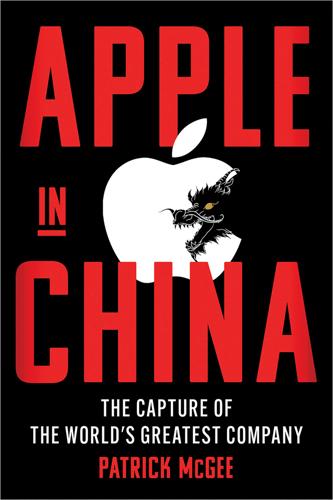
Apple in China: The Capture of the World's Greatest Company
by
Patrick McGee
Published 13 May 2025
The sector had been so awash in incentives and subsidies that Shenzhen alone had 17,000 electric buses at a time when all of Europe and North America had practically none. Consumers who purchased EVs were often able to get a free license plate, which are otherwise tightly controlled and sold at auction. Despite all this support, EVs and plug-in hybrids together accounted for just 4.8 percent of the new car market in 2019. Tesla broke ground on the Shanghai Gigafactory in December 2018; by late 2019 China-made Model 3 vehicles were coming off the production line. Immediately they were a massive hit, and the Tesla Model 3 was China’s bestselling EV in 2020. Chinese consumers “didn’t want to buy anything being manufactured by Chinese brands; they all wanted Tesla,” says Parikh.
…
The theory is partly misleading. It implies that Tesla just inspires competitors to do better, but Tesla works intimately with and improves its third-party vendors, who then supply the local EV brands such as BYD. This, of course, is the Apple model, and Parikh—who played a key role in establishing the Shanghai Gigafactory—specifically hired engineers with Apple experience to set the plan into motion. “Working with Tesla is not easy,” Parikh says. “But the mindset of suppliers is ‘We’re going to become very strong if we can adapt.’ It’s just like working with Apple. If they can unlock the scalability, then they can grow with Apple, or grow with Tesla, and become world-class suppliers.”

The Driver in the Driverless Car: How Our Technology Choices Will Create the Future
by
Vivek Wadhwa
and
Alex Salkever
Published 2 Apr 2017
Electric vehicles will soon cost substantially less to operate, from cradle to grave, than gasoline-fueled ones. And the same technology that is used for car batteries can be used for homes and businesses to store solar energy. Tesla is taking the lead in developing battery technologies. In July 2016, it opened its $5 billion Gigafactory, which will produce 35 gigawatt-hours (GWh) of battery storage a year—exceeding the capacity of all the lithium-ion batteries produced world wide in 2013. At its launch, Elon Musk said that he’s confident the batteries will reach a price of $100 per kWh by 2020 (the average price was $1,200/kWh in 2010).
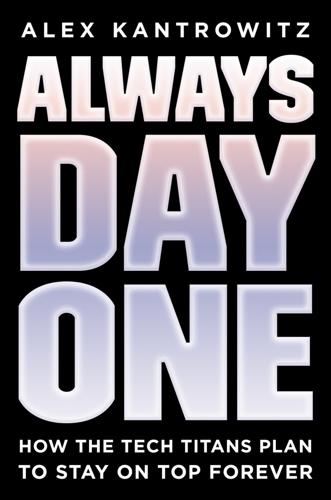
Always Day One: How the Tech Titans Plan to Stay on Top Forever
by
Alex Kantrowitz
Published 6 Apr 2020
Dow Jones & Company, October 25, 2018. https://www.wsj.com/articles/at-netflix-radical-transparency-and-blunt-firings-unsettle-the-ranks-1540497174?mod=hp_lead_pos4. Ideas at Tesla come from the top: Duhigg, Charles. “Dr. Elon & Mr. Musk: Life Inside Tesla’s Production Hell.” Wired. Condé Nast, December 13, 2008. https://www.wired.com/story/elon-musk-tesla-life-inside-gigafactory. Uber’s culture is famously troubled: Isaac, Mike. Super Pumped: The Battle for Uber. New York: W. W. Norton & Company, 2019. CHAPTER 1: INSIDE JEFF BEZOS’S CULTURE OF INVENTION Bezos drives Amazon’s inventive culture through fourteen leadership principles: “Leadership Principles.” Amazon.jobs.
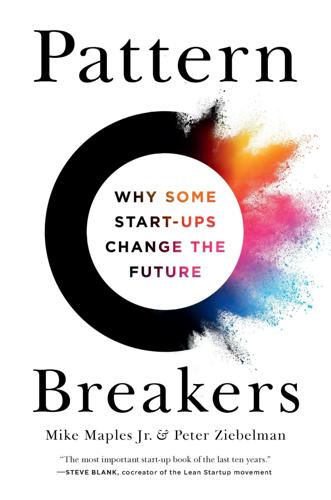
Pattern Breakers: Why Some Start-Ups Change the Future
by
Mike Maples
and
Peter Ziebelman
Published 8 Jul 2024
You do it by figuring out how things can go right.” BUILD YOUR ECOSYSTEM WITH CO-CONSPIRATORS Just as the status quo has an ecosystem of customers, competitors, partners, buyers, and suppliers, it takes a coalition of people and a well-defined ecosystem to support a breakthrough. Think of Tesla’s charging stations, its Gigafactory in Texas, or the supply chain required to build a car. If any link in that ecosystem were missing, Tesla’s movement would be severely limited in its ability to spread. Building an ecosystem to support a new idea is actually nothing new. Here’s a classic, old-school example of a breakthrough founder: Clarence Birdseye in the 1920s.

Breaking Twitter: Elon Musk and the Most Controversial Corporate Takeover in History
by
Ben Mezrich
Published 6 Nov 2023
It wasn’t really a spaceship, of course, but a factory—although that, too, was inaccurate. The massive building, filled with tech straight out of a science fiction movie, was as similar to the grimy assembly lines and mechanical sweatshops of its forebears as a supercomputer was to an abacus. Gigafactory Texas was a great leap forward in both engineering and ambition, the largest production facility in the Tesla portfolio. The factory was also the second-largest building in the world, the size of fifteen city blocks, utilizing more steel than the Empire State Building, and still expanding as the company continued filing plans to grow.
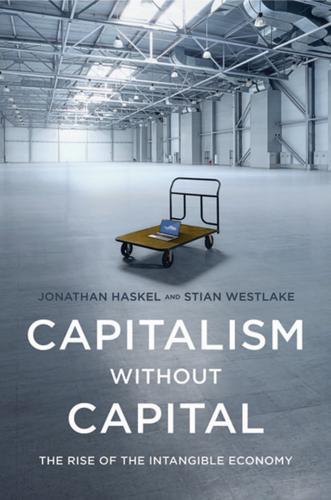
Capitalism Without Capital: The Rise of the Intangible Economy
by
Jonathan Haskel
and
Stian Westlake
Published 7 Nov 2017
And this is the dilemma, from the point of view of anyone who is eager to see public companies making more long-term investments in intangible investments. On the one hand, investors with more concentrated stakes are a good thing, but on the other, so are diversified investors. Without concentrated investors, companies are less likely to invest in tamoxifens and Gigafactories; without diversified investors, they are less likely to invest in the CT scanner or in Bell Labs. An alternative strategy arises if, as it seems, certain types of intangible investment tend to be systematically undervalued. This suggests there are opportunities for investors who can identify good intangible investments and back companies that make them over the medium term.

Climate Change
by
Joseph Romm
Published 3 Dec 2015
The 2015 study projects that costs will fall to some $230 per kWh in the 2017 to 2018 timeframe. Tesla Motors and Panasonic have started building a massive $5 billion plant that can produce half a million battery packs each year (plus extra batteries for stationary applications). It is expected to be completed in 2017. Tesla and Panasonic estimate this 6500-employee “Gigafactory” will lead to a 30% reduction in cost, which the 2015 study said is “a trajectory close to the trends projected in this paper.” It may well be that $150 per kWh can be achieved by 2020 without a major battery breakthrough but simply with continuing improvements in manufacturing, economies of scale, and general learning by industry.
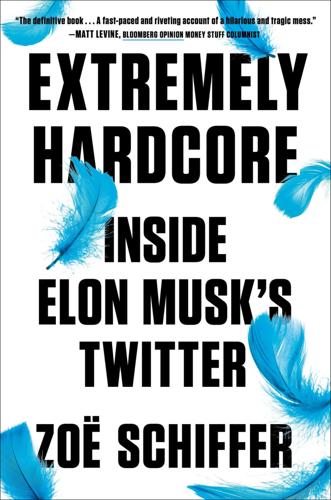
Extremely Hardcore: Inside Elon Musk's Twitter
by
Zoë Schiffer
Published 13 Feb 2024
* * * — Hours after the bid became public, Musk walked onstage in front of eighteen hundred people and sat down in a chair across from Chris Anderson, head of the nonprofit media organization TED. Anderson hadn’t been sure Musk would make it to the conference. One week earlier, the British American businessman had recorded an interview with Musk at the Tesla Gigafactory in Austin, Texas, in case Musk didn’t show. Now, here was Anderson, talking to the visionary onstage. “So, Elon, a few hours ago, you made an offer to buy Twitter,” Anderson said, enunciating each word as if he still couldn’t believe the news himself. “Why?” Musk raised his eyebrows at the audience, then turned away shyly.

Platform Revolution: How Networked Markets Are Transforming the Economy--And How to Make Them Work for You
by
Sangeet Paul Choudary
,
Marshall W. van Alstyne
and
Geoffrey G. Parker
Published 27 Mar 2016
The leading sources of renewable energy, wind and solar, are both intermittent, which leads to mismatches between supply and demand. More efficient rechargeable electrical storage batteries could provide an answer. Tesla, most famous for its electric vehicles, is currently building a so-called gigafactory in Nevada that is expected to manufacture a new generation of powerful batteries that are capable of supplying energy to a home for up to two days. Sister company SolarCity—run by a cousin of Tesla chairman Elon Musk—which already controls 39 percent of the residential solar market, has announced that, within a decade, all of its power units will come complete with battery storage.
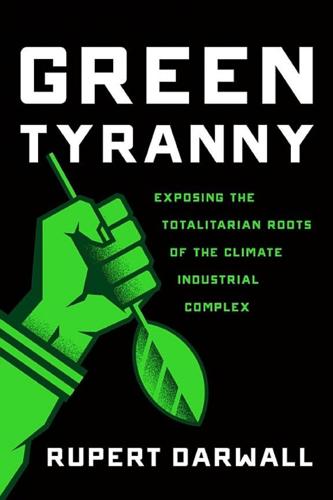
Green Tyranny: Exposing the Totalitarian Roots of the Climate Industrial Complex
by
Rupert Darwall
Published 2 Oct 2017
Countries can’t function safely and efficiently without buffer stocks of commodities. According to energy and tech expert Mark Mills, at any given time, country-level supply chains of critical commodities typically have three months’ worth of annual demand in storage. The annual output of Elon Musk’s planned $5 billion “gigafactory” in Nevada, slated to produce more than all the world’s existing lithium batteries combined, could store about five minutes of annual U.S. electricity demand. “Storing electricity in expensive short-lived batteries is not a little more expensive but tens of thousands of times more expensive than storing gas in tanks or coal in piles adjacent to idle but readily available long-lived power plants,” Mills explains.51 Lack of storability makes the operating and economic dynamics of electricity generation and distribution entirely different from other forms of energy such as oil and gas, and from all other commodities: Supply must respond almost instantaneously to changes in demand; not enough, and there is a danger of degraded quality and power cuts; too much, and the transmission system can be damaged, wires deformed or even melted.

The Powerful and the Damned: Private Diaries in Turbulent Times
by
Lionel Barber
Published 5 Nov 2020
In the afternoon, a visit from Elon Musk who has parked his red Tesla at the back entrance to the FT, part of a London tour to show why he is one of the most exciting entrepreneurs in the world. Right now he’s juggling not just one world-class innovative venture but three: the Tesla electric car; a new Gigafactory battery manufacturing plan; and SpaceX, the space rocket maker whose ultimate goal is to foster space transportation and help us to colonise Mars.fn7 Musk makes light of our sceptical questioning. How to achieve scale in electric car manufacturing to compete against the likes of GM and Ford? How to ensure there are enough electric chargers available for mass travel by electric car?
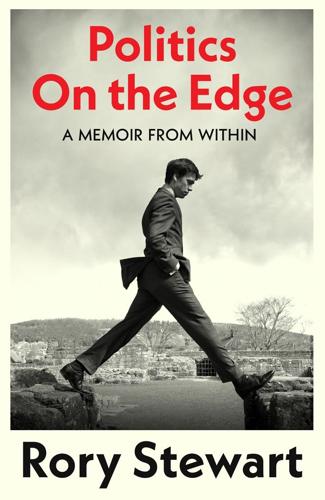
Politics on the Edge: The Instant #1 Sunday Times Bestseller From the Host of Hit Podcast the Rest Is Politics
by
Rory Stewart
Published 13 Sep 2023
‘You have to speak about the environment,’ said Shoshana, ‘your work at DfID, you are the tree guy, you are the only candidate talking about climate cataclysm.’ So, I took over the laptop and wrote, ‘We should be the world leader on the environment. Climate change is the biggest existential threat of our times.’ And added: Gigafactories and battery development here Research and development at British universities Climate conference I’ll plant 100 million new trees And looked out of the window again. ‘Come on what else really matters to you?’ ‘Is this really the way to write a manifesto?’ I asked. She ignored me. ‘What else do you really care about?’

Blood in the Machine: The Origins of the Rebellion Against Big Tech
by
Brian Merchant
Published 25 Sep 2023
It’s an important point that, despite our more sophisticated tech, is just as true today as it was at the dawn of the Industrial Revolution—there’s simply no such thing as fully automated production. The writer Astra Taylor calls it “fauxtomation” when executives use the promise of automation as an excuse not to eliminate labor, but to hide and degrade it. Whether at a cutting-edge electric car company gigafactory or an eighteenth-century textile mill, workers still very much need to be on hand to ensure the machinery keeps running. Just as Regency-era entrepreneurs pushing for greater efficiencies, profit margins, and control paved the way for the industrial factory system, a move that transformed how humans live and work, a new thrust now threatens to do the same, all over again.

Northern California Travel Guide
by
Lonely Planet
It has a reputation for being a 'poor man's Vegas,' but while in some ways that cap fits, we're here to set the record straight: Reno is oh, so much more. Beyond the garish downtown, with its photoworthy mid-century modern architecture, neon signs and alpine-fed Truckee River, sprawls a city of parks and pretty houses inhabited by a friendly bunch eager to welcome you. Stealing a piece of California's tech-pie, the gargantuan Tesla Gigafactory will open its doors here in 2020, bringing plenty of cashed-up youngsters to town, and Reno is ready: the transformation of the formerly gritty Midtown District continues, injecting a dose of funky new bars, top-notch restaurants and vibrant arts spaces into Reno's already unique and eclectic mix.